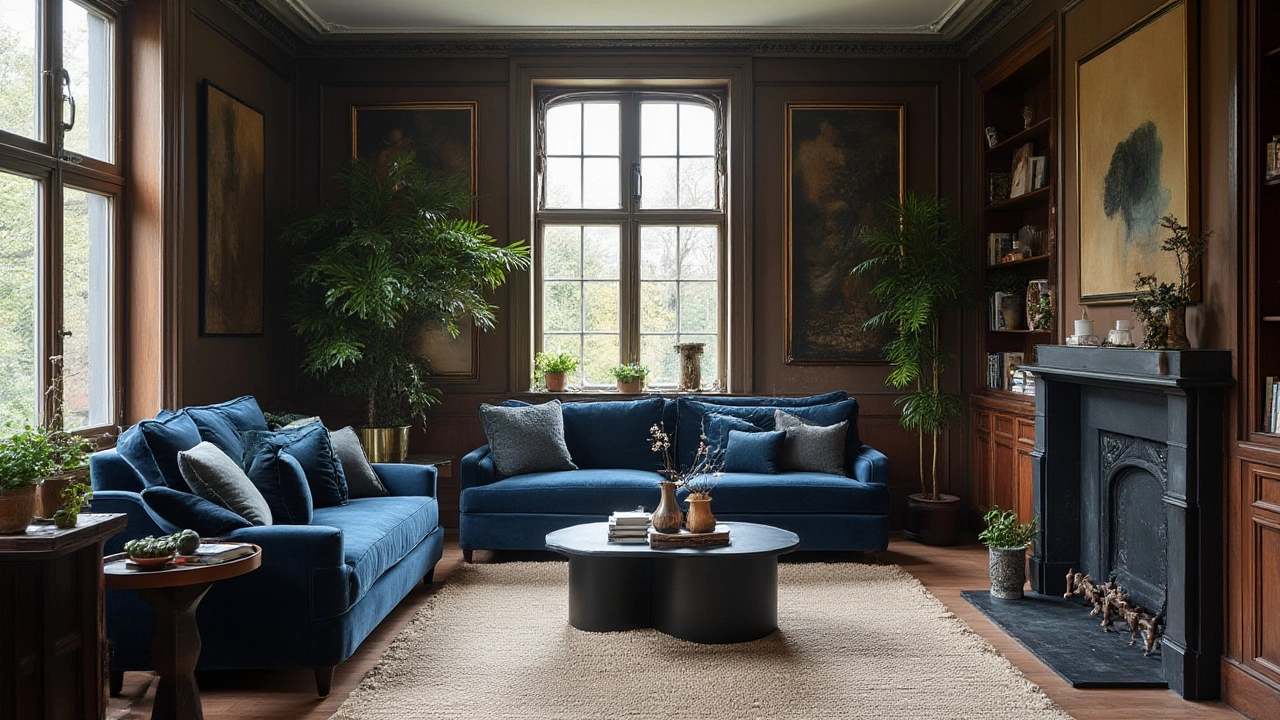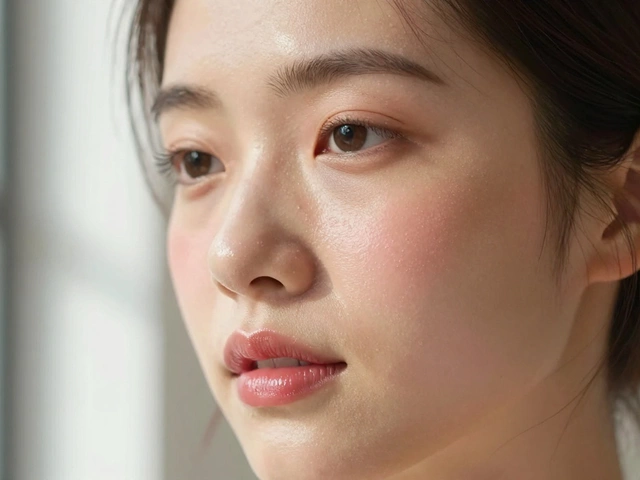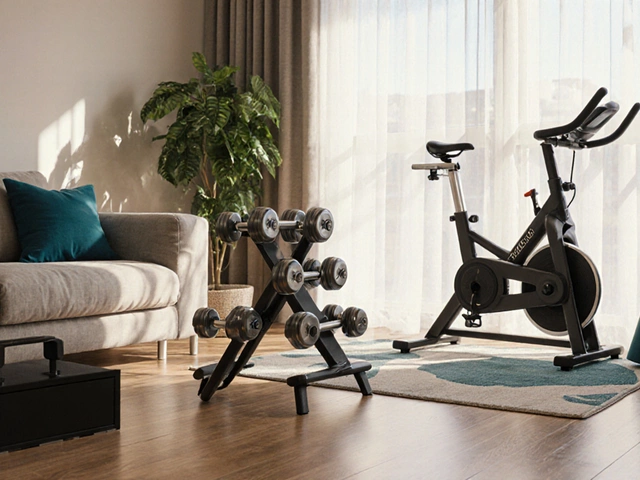Remember when everyone wanted things light and breezy? Goodbye cherry wood, hello airy white oak and soft beige everything—or so it seemed. Fast-forward to 2024, and suddenly, the dark side is looking pretty tempting again. Rich espresso bookcases, moody walnut tables, even black leather sofas—you walk into a design showroom, and there’s this unmistakable sense: dark furniture is back, and it is not hiding in corners anymore. So, why the change? Are people tired of minimalist ten-shade-greige spaces, or is there something deeper going on? Grab your metaphorical notepad, because if you’ve always loved the drama of a dark wood dining table or the elegance of a deep mahogany dresser, this year is your time to shine.
Why Dark Furniture is Taking Center Stage in 2024
The swing back to dark furniture isn’t just designers playing roulette with your sofa choices. If you follow Pinterest or browse the Instagram feeds of top interior stylists, you can’t miss it: those moody kitchens with black cabinets, chocolate walnut floors, and chunky, almost gothic tables dressed up with quirky lighting. Nope, it’s no coincidence. People are craving more depth and character at home; warmth is in, and dark tones instantly fill that emotional space. Light, neutral Scandinavian looks aren’t out, but they’re sharing the stage now.
This trend is popping up for a few pretty relatable reasons. First, there’s the "home is my sanctuary" effect—after the rollercoaster of recent years, everyone wants rooms that feel cozy and safe. Second, the move towards sustainability is a real player here. Antique dark wood pieces or high-quality, stained furniture carry that storied, forever vibe. (Fun fact: the search for "vintage dark wood furniture" hit its highest point ever in spring 2024, according to a Google Trends report.) People want stuff that lasts, with history and substance—no plastic, soulless furniture that falls apart in two moves, thank you.
Dark doesn’t mean your home has to look like a villain’s lair. In fact, designers say dark tones are showing up in clever, balanced ways: think deep wood dining tables paired with white upholstered chairs, or black media cabinets against soft sage walls. The trick is contrast and layering, not drowning your space in darkness. If you’re still not convinced, retailers are already betting big: West Elm and Crate & Barrel both debuted entire lines of espresso-stained sideboards, blackened oak shelves, and jewel-toned velvet sofas for 2024. They wouldn’t risk shelf space for trends that don’t sell.
Let’s talk about the numbers for a minute. Check out this little cheat sheet below—furniture industry sales in the United States for dark vs. light-toned furniture, pulled from a 2024 trade report:
| Year | Dark Furniture Sales (USD billion) | Light Furniture Sales (USD billion) |
|---|---|---|
| 2020 | 6.5 | 13.3 |
| 2022 | 9.2 | 14.1 |
| 2023 | 12.1 | 13.5 |
| 2024 (projected) | 14.7 | 12.9 |
Look at those numbers! For the first time in half a decade, dark-toned pieces are set to outsell their lighter cousins. Clearly, this isn’t just a blip—it’s a real shift in taste. It doesn’t hurt that deep colors hide scuffs and wear better (parent- and pet-approved), or that they add instant luxury, even if your budget is more IKEA-hack than custom Italian cabinet.
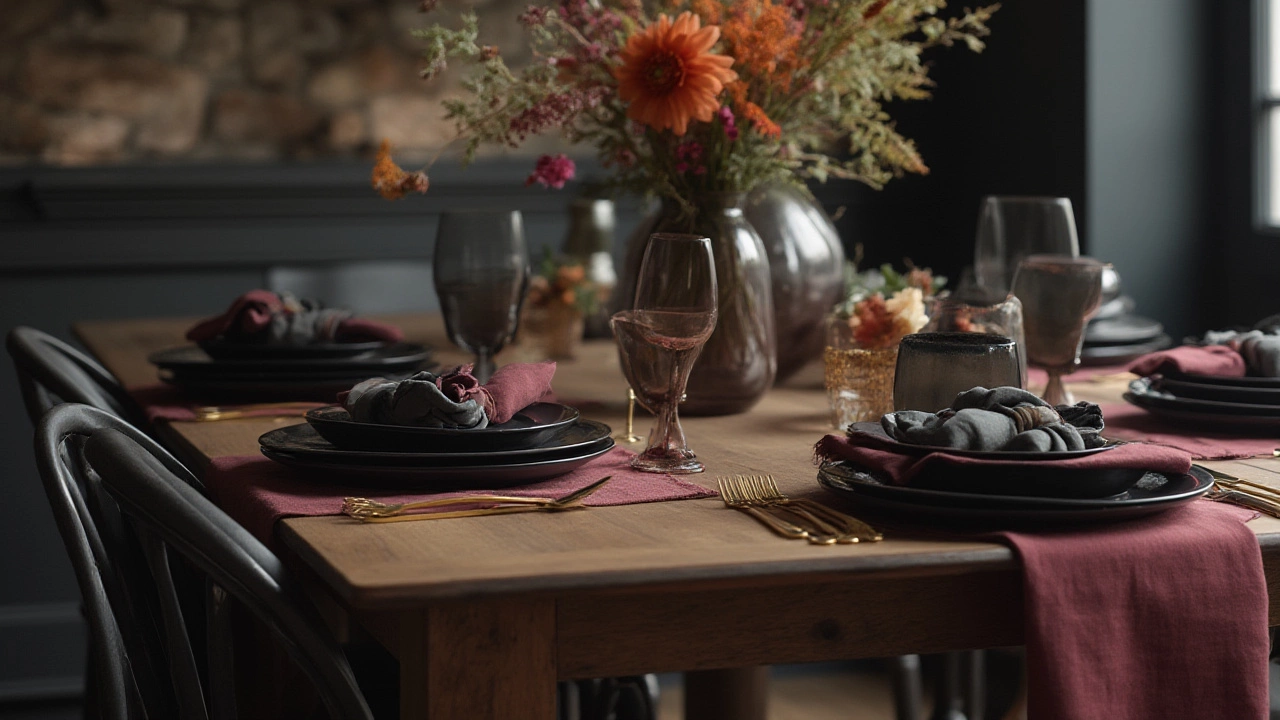
How to Work Dark Furniture Into Your Space Without Feeling Overwhelmed
Now for the big question: dark pieces look amazing... in the showroom. At home, won’t they just swallow up your living room, or make everything feel smaller? Trickier, yes, but totally doable—and real people are pulling it off every day. The first tip designers (and, honestly, anyone who’s ever regretted buying a nearly-black bookcase) will give you: balance is the silver bullet. You can go bold with that black four-poster bed, but it needs company—creamy walls, pale curtains, maybe some mirrored or brass details to keep things jazzy.
Another trick: mix up your materials. Dark wood or metal can feel less intimidating when you throw in a blush velvet throw blanket, a woven rattan lamp shade, or even some quirky ceramic vases. Layers create interest and stop your space from feeling flat. If you’re working with a small or north-facing room, don’t be scared to use dark furniture—it can actually make a space feel cozier instead of tighter. Light or sheer window treatments, big mirrors, and open shelving all help bounce the light around. Ever notice how steakhouses and boutique hotels pull off all those deep woods and leathers but still feel inviting? It’s all about strategic pops of color and light.
People always ask about matching woods. Old-school design said to match (or at least closely coordinate) all your finishes. Not true in 2024. Contrasting wood tones—like an espresso coffee table with bleached oak floors—looks modern and intentional. Just tie it together with accessories that repeat a few colors (think: throw pillows, art, rugs). And let’s not ignore the magic of greenery. Big plants against dark furniture suddenly look lush and expensive. Snake plants, fiddle leaf figs, even a humble pothos make a dramatic statement here.
If you want to start small, try a dark accent table, bookshelf, or a single walnut chair. Sometimes, less is more when testing a trend—or when you’re working with a room that already has a lot going on. Just one piece can anchor a space, almost like eyeliner for your living room. Want to go bolder? Statement dining sets, big bookcases, or a black kitchen island are all in the spotlight this year. The key is not to let dark pieces feel crowded; let them breathe and become the focus without piling on more heavy pieces around them.
There’s also a shift toward mixing vintage and new. People are hunting for 1970s rosewood credenzas, antique steamer trunks, and Art Deco vanity tables, pairing them with modern lighting or minimalist sofas. It’s less about perfectly matching everything and more about curating a story—dark furniture often brings that instant personality. If you’re sourcing on a budget, secondhand shops and Facebook Marketplace have never been so full of treasure (or so competitive). Set alerts for "dark wood" or "walnut"—you might just score a deal before everyone else catches on.
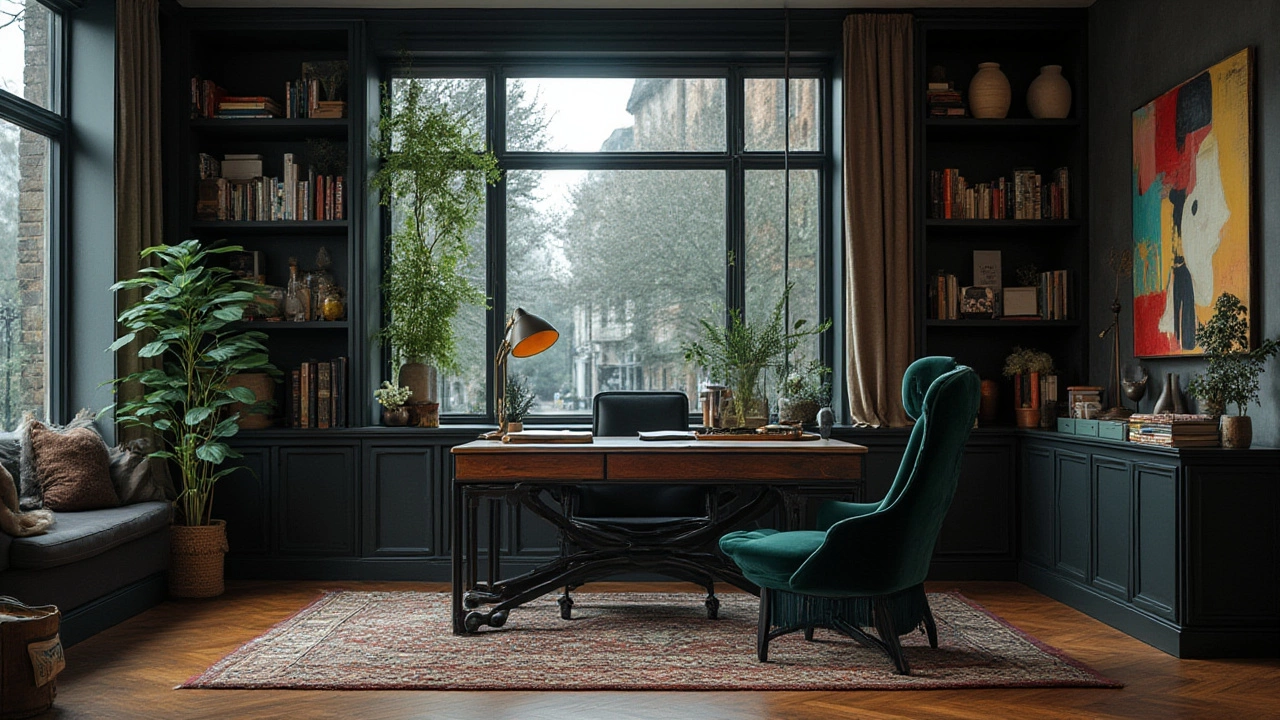
Styling Tips and Ideas: Making Dark Furniture Pop in Modern Homes
Alright, you’re sold—maybe you’ve already found a gorgeous, nearly-black sideboard, or you’re eyeing a midnight-blue velvet sofa. Now, how do you avoid the “grandparent’s den” vibe and keep things fresh? Let’s dig into some pro styling ideas that are trending right now.
- Contrast is King: Use light area rugs, pale throws, or artwork with lots of white space. Designers love pairing moody pieces with crisp linen or boucle textures.
- Go Metallic: Brass, gold, and even silver lighting or handles help dark furniture sparkle. Try a black dresser with gold drawer pulls for instant glam.
- Play with Shape: Want a dark piece that feels modern? Look for clean lines—rectangular coffee tables, geometric chairs, or orb-shaped pendant lamps. Avoid fussy carving unless you’re into hardcore vintage vibes.
- Add Artwork: Dark furniture makes colorful or bold graphic art pop. Even a simple gallery wall over a black sofa or mahogany console looks like a million bucks.
- Light It Up: Don’t forget extra lighting—table lamps, sconces, or uplights focused on dark furnishings bring them alive. If you have big windows, try not to block them; dark pieces love natural sunlight for drama, not gloom.
- Bring in Nature: Plants stand out beautifully next to deep tones. Try grouping three small pots together on a dark desk, or a towering fig next to a walnut buffet.
There’s also a color trend happening alongside darker woods: rich, jewel-toned accents. Think deep sapphire, forest green, plum—these colors play amazingly well with espresso, black, or dark-stained pieces. You don’t have to repaint your wall—just try a few new pillow covers or a moody glass vase. And for kitchen fans: black cabinets mixed with butcher block counters and plenty of white tile are popping up everywhere right now. If you’re afraid of commitment, peel-and-stick wallpaper or dark-stained floating shelves create the look without a giant leap.
Function should always win, even when following a trend. Make sure shelves, dressers, or tables are the right fit for your space and actually useful for your lifestyle. If you deal with dust or fingerprints (like any house with kids or pets), choose pieces with matte finishes rather than glossy. They’re way less “high maintenance,” which is honestly what most of us want after a long week with real life chaos.
So, is dark furniture coming back in 2024? All signs say yes. Whether you jump in with a statement piece or just experiment on a smaller scale, the trend is about warmth, history, and a little daring. The best part? None of this advice is about following strict rules. Chill out about matching everything down to the last wood grain. Curate a room that feels like you—just don’t be surprised if your light-loving friends suddenly want tips.
